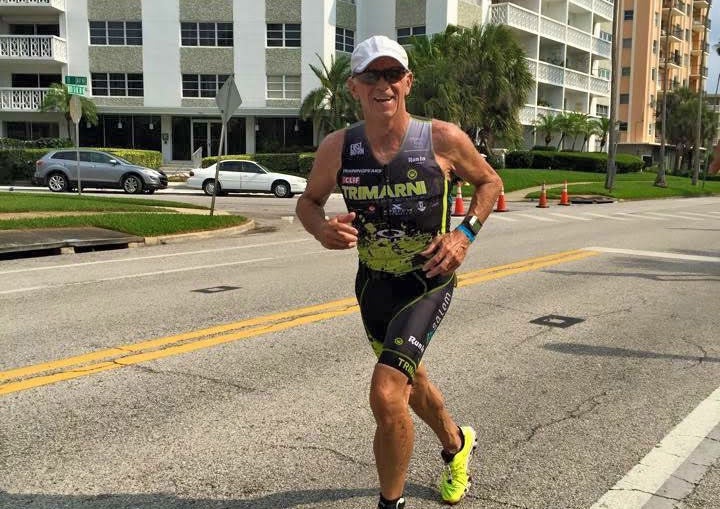Fuel Case Study: The Proactive Senior Athlete

With age, comes physical changes and a resulting need to take a closer look at the diet to optimize performance—and to reduce disease risk and help prolong life.
The Athlete
Gary Bonacorsi
Palm Harbor, Florida
69 years old
5’6”, 145 pounds
Years in the sport: 20
Sport distance: Sprint triathlon
Occupation: Retired
The Issue
Gary’s nutrition problems weren’t obvious; he’s extremely consistent with his training, and it’s rare for him to experience health-related setbacks. But he knew with age comes physical changes and that he needed to take a closer look at his diet to optimize performance—and to reduce disease risk and help prolong his life.
The Bottom Line
Although Gary now eats far less than what he did when he was young, his diet quality has improved. Gary receives all of his nutrients from real food and only consumes three supplements: a 55+ multivitamin, vitamin D3, and a macula support medicine advised by his optometrist. Recognizing the extreme physical demands of triathlon, Gary takes his nutrition as seriously as his training and it shows in his consistent podium performances.
RELATED: How Do I Fuel for Triathlon with Celiac Disease?
Senioritis
For athletes like Gary Bonacorsi, nutrition guidelines are more important than ever—no longer can a 50-plus-year-old athlete out-train poor nutrition habits. Although energy needs decrease with age in the sedentary population—muscle loss while aging can cause a drop in resting metabolic rate—most masters athletes are dedicated to daily training and spend extra time on social activities and house projects. To fuel successfully and gain a competitive edge, they need to make an extra effort to meet daily energy needs, paying special attention to food quality and hydration.
Nutrition Checklist
Varied Diet of Nutrient-Dense Food
The efficiency of absorption and utilization of nutrients slows as we age. So masters athletes need variety in a nutrient-dense diet to make sure they cover all their bases. Special considerations when developing a plan: loss of appetite, changes in taste and smell, food preferences, oral and digestive changes, and availability of healthy food options.
Carb Right
Aiming for high-quality carbohydrates—like whole grains, fruits and vegetables—over processed and sugar-rich foods will help both masters athletes and younger folks meet training demands and maintain optimal energy intake while also reducing risk for disease and excessive weight gain. A general rule of thumb: 3-5g/kg/day for days with very light intensity workouts; 5-7g/kg/day for moderate to high-intensity exercise; 7-12g/kg/day for endurance training.
Muscle Up
Due to a decline in anabolic agents like testosterone and growth hormone, muscle-building capability declines with age. The masters athlete must consume an adequate amount of protein to help maintain muscle mass. A general guideline: 1.2-1.7g/kg/day.
Eat Good Fats
Fat is slow to digest, which helps with meal and snack-time satiety. Healthy fats, like plants and fish oils, have been shown to provide anti-inflammatory bene ts, specifically for the heart, digestive tract, and brain. Nuts, seeds, fish, olive oil, avocado, and nut butter are wise dietary choices.
Watch Your Drugs
If an athlete requires medications for a chronic condition, nutrient and medication interactions should be investigated to prevent a possible performance decline or health issue. For example, eating too many green leafy vegetables rich in vitamin K can interfere with blood-thinning drugs. Always check to see if your medications contain anything on the WADA banned-substance list, like testosterone, and obtain a therapeutic use exemption (TUE) if they are.
Hydrate
With age, the thirst mechanism diminishes. In other words, the masters athlete may not feel thirsty when they actually need fluids. Other changes to the body include less body water, a decline in renal blood flow (more water is needed to remove waste products), and less sweat produced per gland. These changes make paying extra attention to hydration critically important, Aim to consume 16-20 ounces of water in the two hours before exercise, 6-8 ounces every 15 minutes of exercise, and 16-24 ounces immediately after exercise.